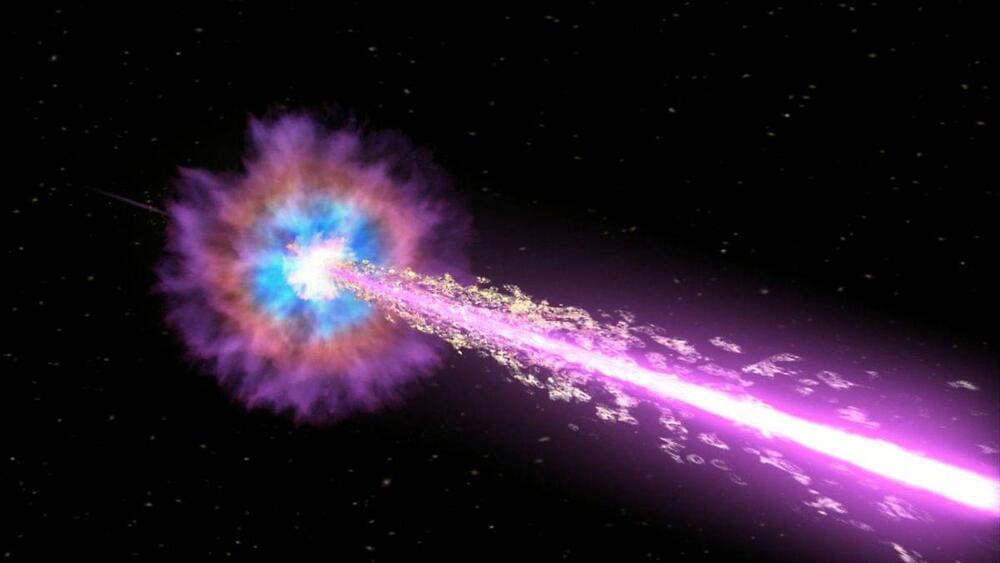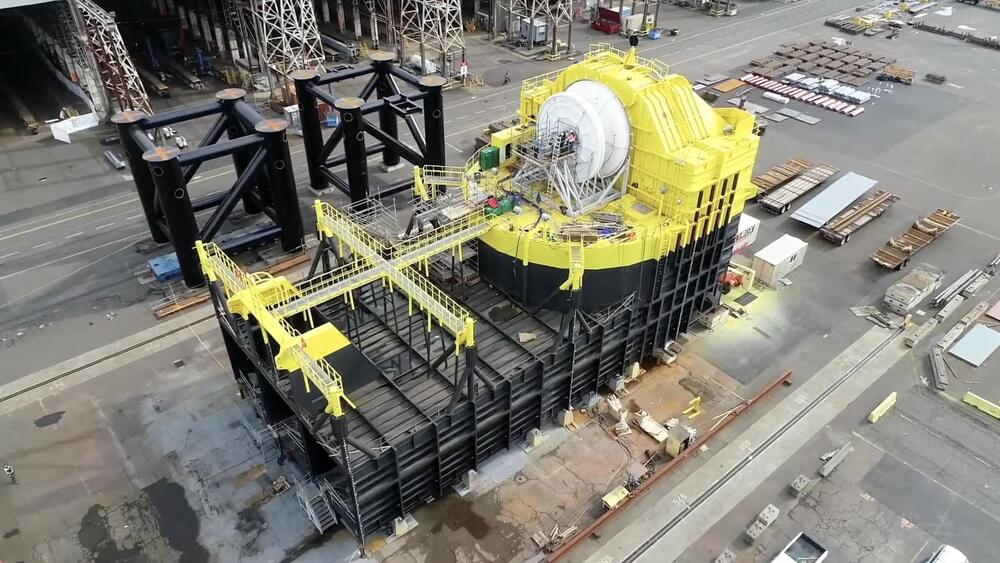Oct 23, 2022
The future of high energy density batteries
Posted by Dan Kummer in categories: energy, futurism
Picture an entire city charged by batteries. This new battery design may unlock a new era of energy.

Picture an entire city charged by batteries. This new battery design may unlock a new era of energy.
If you’ve never heard of molten salt reactors before, prepare to have your mind blown. These cutting-edge pieces of technology might well be the answer to freeing our species from its addiction to fossil fuels.
First constructed and operated in the 1960s, molten salt reactors are an interesting and promising energy technology. There’s a variety of different designs for these reactors, but they all, in essence, primarily utilize molten fluoride salts kept under low pressure as the primary coolant for the reactor.

It came from the constellation Sagitta more than 2 billion years ago.
Earlier this month, on October 9th, one of the most intense gamma ray bursts hit the Earth.
The event will take place in a man-made city with a year-round winter sports complex. Can you make snow in the desert? It seems you can, as Saudi Arabia will be hosting the 2029 Asian Winter Games, according to a report published by the South China Morning Post on Tuesday.
Saudi Arabia plans to build the world’s largest buildings as part of its $500 billion development plan called NEOM, as the country looks to steer away from its heavy dependence on oil, Bloomberg reported.
At 10.8 million barrels a day, Saudi Arabia contributes 11 percent of the global oil production and is the largest exporter of crude oil. As the world looks towards a future that is powered by cleaner sources of energy, Saudi Arabia wants to diversify its income sources and has been looking at building destinations where it can attract industries and businesses in the future.
Continue reading “Saudi Arabia wants to build skyscrapers that will run for dozens of miles” »
The project will take 7–8 years. An 853-mile-long (1,373 km) undersea electricity cable connecting Egypt with Europe has been touted to help Europe’s impending energy crisis amidst Russia’s war with Ukraine.
Greece is in embarking on one of Europe’s most ambitious energy projects by linking up its electricity grid with Egypt’s.
An underwater cable will carry 3,000 MW of electricity — enough to power up to 450,000 households — and will run from northern Egypt directly to Attica in Greece.
Continue reading “1373km long undersea cable will bring Egypt’s ‘green energy’ to Europe” »

Aeromine says its unique “motionless” rooftop wind generators deliver up to 50% more energy than a solar array of the same price, while taking up just 10% of the roof space and operating more or less silently. In independent tests, they seem legit.
Distributed energy generation stands to play a growing part in the world’s energy markets. Most of this currently comes in the form of rooftop solar, but in certain areas, wind could definitely play a bigger part. Not every spot is appropriate for a bladed wind turbine, though, and in this regard, University of Houston spinoff Aeromine Technologies has designed a very different, very tidy form of rooftop wind energy capture that looks like it could be a real game-changer.
Continue reading “Rooftop wind system delivers 150% the energy of solar per dollar” »

Thanks to a $19.2 million collaboration co-funded by the European Union.
Irish firm Ocean Energy has signed up to a collaboration project with 14 industry and university partners in the UK, Ireland, France, Germany, and Spain. The project will test its OE35 floating wave energy device at scale over the next four years.
Researchers have demonstrated a quantum sensor that can power itself using sunlight and an ambient magnetic field, an achievement that could help reduce the energy costs of this energy-hungry technology.
No longer the realm of science fiction, quantum sensors are today used in applications ranging from timekeeping and gravitational-wave detection to nanoscale magnetometry [1]. When making new quantum sensors, most researchers focus on creating devices that are as precise as possible, which typically requires using advanced—energy-hungry—technologies. This high energy consumption can be problematic for sensors designed for use in remote locations on Earth, in space, or in Internet-of-Things sensors that are not connected to mains electricity. To reduce the reliance of quantum sensors on external energy sources, Yunbin Zhu of the University of Science and Technology of China and colleagues now demonstrate a quantum sensor that directly exploits renewable energy sources to get the energy it needs to operate [2].